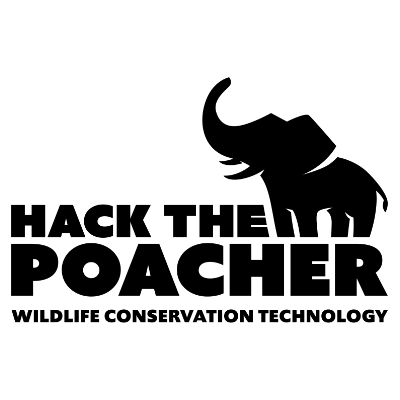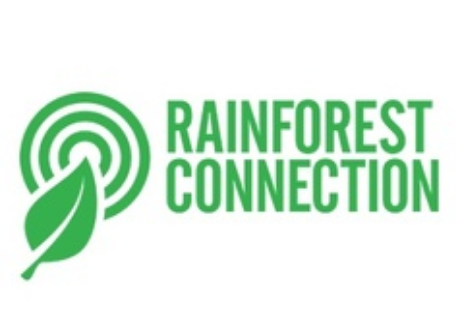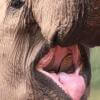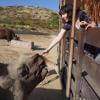With new technologies revolutionizing data collection, wildlife researchers are becoming increasingly able to collect data at much higher volumes than ever before. Now we are facing the challenges of putting this information to use, bringing the science of big data into the conservation arena. With the help of machine learning tools, this area holds immense potential for conservation practices. The applications range from online trafficking alerts to species-specific early warning systems to efficient movement and biodiversity monitoring and beyond.
However, the process of building effective machine learning tools depends upon large amounts of standardized training data, and conservationists currently lack an established system for standardization. How to best develop such a system and incentivize data sharing are questions at the forefront of this work. There are currently multiple AI-based conservation initiatives, including Wildlife Insights and WildBook, that are pioneering applications on this front.
This group is the perfect place to ask all your AI-related questions, no matter your skill level or previous familiarity! You'll find resources, meet other members with similar questions and experts who can answer them, and engage in exciting collaborative opportunities together.
Just getting started with AI in conservation? Check out our introduction tutorial, How Do I Train My First Machine Learning Model? with Daniel Situnayake, and our Virtual Meetup on Big Data. If you're coming from the more technical side of AI/ML, Sara Beery runs an AI for Conservation slack channel that might be of interest. Message her for an invite.
Header Image: Dr Claire Burke / @CBurkeSci

Explore the Basics: AI
Understanding the possibilities for incorporating new technology into your work can feel overwhelming. With so many tools available, so many resources to keep up with, and so many innovative projects happening around the world and in our community, it's easy to lose sight of how and why these new technologies matter, and how they can be practically applied to your projects.
Machine learning has huge potential in conservation tech, and its applications are growing every day! But the tradeoff of that potential is a big learning curve - or so it seems to those starting out with this powerful tool!
To help you explore the potential of AI (and prepare for some of our upcoming AI-themed events!), we've compiled simple, key resources, conversations, and videos to highlight the possibilities:
Three Resources for Beginners:
- Everything I know about Machine Learning and Camera Traps, Dan Morris | Resource library, camera traps, machine learning
- Using Computer Vision to Protect Endangered Species, Kasim Rafiq | Machine learning, data analysis, big cats
- Resource: WildID | WildID
Three Forum Threads for Beginners:
- I made an open-source tool to help you sort camera trap images | Petar Gyurov, Camera Traps
- Batch / Automated Cloud Processing | Chris Nicolas, Acoustic Monitoring
- Looking for help with camera trapping for Jaguars: Software for species ID and database building | Carmina Gutierrez, AI for Conservation
Three Tutorials for Beginners:
- How do I get started using machine learning for my camera traps? | Sara Beery, Tech Tutors
- How do I train my first machine learning model? | Daniel Situnayake, Tech Tutors
- Big Data in Conservation | Dave Thau, Dan Morris, Sarah Davidson, Virtual Meetups
Want to know more about AI, or have your specific machine learning questions answered by experts in the WILDLABS community? Make sure you join the conversation in our AI for Conservation group!
- @ajcanepa
- | he him
PhD in Ecology, Nature's sound lover.
- 0 Resources
- 0 Discussions
- 5 Groups
- 0 Resources
- 0 Discussions
- 16 Groups
- 0 Resources
- 0 Discussions
- 6 Groups
- @bioNathan
- | he/him
Innovation Design Engineer studying at MSc + MA level. Previously a Robotics engineer with specialisms in remote sensing, control systems & electronics design. Transitioning to ecological contexts. I use bioinspiration to inform tech design, both product & infrastructure.
- 0 Resources
- 0 Discussions
- 8 Groups
Tech 4 Conservation
President, Tech 4 Conservation
- 0 Resources
- 6 Discussions
- 18 Groups
- @kalado
- | Kalado
- 0 Resources
- 0 Discussions
- 8 Groups
Botswana Predator Conservation Trust



- 0 Resources
- 72 Discussions
- 10 Groups
Quantitative ecologist @ Biotope
- 0 Resources
- 0 Discussions
- 4 Groups
- @donovantye
- | He/Him
Savanna Ecologist, Field Station Director and Head of Conservation Tech Projects for Organization for Tropical Studies (OTS).
- 0 Resources
- 0 Discussions
- 14 Groups
- @Seagoose
- | she/her
Ecologist & Conservationist. Women for the Environment, Africa Fellow. National Geographic Explorer.
- 0 Resources
- 4 Discussions
- 8 Groups
Conservation technology enthusiast

- 0 Resources
- 3 Discussions
- 14 Groups
- @siddharth119
- | He/Him
Nature lover from MA
- 0 Resources
- 0 Discussions
- 1 Groups
Save the Elephants is seeking a Principal Investigator for our Elephant Collective Behaviour Project. This role will spearhead research initiatives using cutting-edge video analysis tools to study elephant group...
1 May 2024
Article
Read in detail about how to use The Inventory, our new living directory of conservation technology tools, organisations, and R&D projects.
1 May 2024
Article
The Inventory is your one-stop shop for conservation technology tools, organisations, and R&D projects. Start contributing to it now!
1 May 2024
Technology to End the Sixth Mass Extinction. Salary: $132 - $160k; Location: Seattle WA; 7+ years of experience in hardware product development and manufacturing; View post for full job description
1 May 2024
Review by Professor Iain H Woodhouse
29 April 2024
Careers
The Smithsonian National Zoo & Conservation Biology Institute is seeking a Program Manager to help coordinate multiple organizations in an effort to integrate movement data & camera trap data with global...
22 April 2024
The Smithsonian National Zoo & Conservation Biology Institute is seeking a Postdoctoral Research Fellow to help us integrate movement data & camera trap data with global conservation policy.
22 April 2024
Join the Seeed Vision Challenge, an opportunity for conservation innovators to harness the power of AI vision sensors for environmental monitoring and protection.
10 April 2024
Full-Stack Software Developer (Python/React) - Specializing in AI/ML for Wildlife Conservation
5 April 2024
Article
Article from Ars Technica about how difficult it is to detect and avoid kangaroos...
3 April 2024
18 month postdoc research position, Netherlands, EU-funded
28 March 2024
Article
You’re invited to the WILDLABS Variety Hour, a monthly event that connects you to conservation tech's most exciting projects, research, and ideas. We can't wait to bring you a whole new season of speakers and...
22 March 2024
May 2024
September 2024
event
October 2024
September 2023
event
August 2023
43 Products
Recently updated products
12 Products
Recently updated products
| Description | Activity | Replies | Groups | Updated |
|---|---|---|---|---|
| Online citizen science platforms like iNaturalist and Macaulay Library contain a wealth of images but are hard to search using text. We are... |
|
AI for Conservation, Citizen Science | 15 seconds ago | |
| We're seeking training data for AI for wolf ID - we at T4C manage 3 Wildbook platforms: Wild North, Whiskerbook and the... |
|
AI for Conservation | 2 days 7 hours ago | |
| Hi Phani,An entry point might be to participate in a challenge related to conservation on:KaggleDrivenDataFruitPunchMax Planck Institute of Animal BehaviorYou could also reach out... |
|
AI for Conservation | 1 week ago | |
| You can also do these things or feed it your own sources that it must not hallucinate from (and keeps confidential) if you have the paid-for version. |
+37
|
AI for Conservation, Emerging Tech | 1 week ago | |
| SYNTHETIC APERTURE RADAR WILL ALSO DETECT AND LOCATE CHAINSAWS, MOTORBIKES, BICYLCLES, FIREARMS, MACHETES in fact anything metal. I have been concentrating on trying to get... |
+10
|
AI for Conservation, Drones, Emerging Tech, Human-Wildlife Conflict, Wildlife Crime | 1 week ago | |
| I'm not an expert in this field, but have been doing some self study for a local project... Resolving animals in an image is not purely height related - but rather a combination... |
|
AI for Conservation | 1 week 1 day ago | |
| [oops, the same reply got submitted twice and there doesn't seem to be a "delete" button] |
|
AI for Conservation, Camera Traps | 1 week 1 day ago | |
| Hi @zhongqimiao ,Might you have faced such an issue while using mega detectorThe conflict is caused by:pytorchwildlife 1.0.2.13 depends on torch==1.10.1pytorchwildlife 1.0.2.12... |
+6
|
AI for Conservation, Camera Traps, Open Source Solutions | 1 week 1 day ago | |
| Hey Sol, No problem at all. Depending on your configuration, the Audiomoth software would have to work on a PCB with an ESP32 chip which is the unit on the audiomoth/... |
|
Acoustics, AI for Conservation, Data management and processing tools, Emerging Tech, Sustainable Fishing Challenges | 1 week 3 days ago | |
| Hi, this is pretty interesting to me. I plan to fly a drone over wild areas and look for invasive species incursions. So feral hogs are especially bad, but in the Everglades there... |
|
AI for Conservation, Camera Traps, Open Source Solutions, Software and Mobile Apps | 1 week 3 days ago | |
| Gotcha, well I look forward to seeing future iterations and following along with your progress!! |
|
Autonomous Camera Traps for Insects, AI for Conservation, Emerging Tech, Open Source Solutions | 1 week 5 days ago | |
| Hi everyone!@LashaO and @holmbergius from the Wild Me team at ConservationX Labs gave a superb talk at last month's Variety Hour,... |
|
AI for Conservation, Camera Traps | 2 weeks ago |
Looking for animal emotions data for ML
17 March 2021 12:43pm
26 March 2021 7:44pm
Thank you VERY much for that, Carly. I really appreciate it. I have only heard of the bear research project and was not aware of the others. This is very helpful.
FYI: Most studies I am aware of use ML with facial recognition software. I am interested to find out if there are recognition software/research for facial-gesture-voice-speech as this will be more accurate to read animals that have less elastic facial expressions than primates or humans.
The 2021 #Tech4Wildlife Photo Challenge: Community Highlights
25 March 2021 12:00am
Event: tinyML for Good: Conservation & Climate
 Edge Impulse
Edge Impulse
22 March 2021 12:00am
Allen Coral Atlas - using machine learning to map coral reefs
17 March 2021 6:48pm
Building Experts Into AI
 Whale Seeker
Whale Seeker
15 March 2021 12:00am
Kaggle Competition: iWildcam 2021 - FGVC8
 CVPR
CVPR
12 March 2021 12:00am
Funding Opportunity: COVID-19 Science Fund
 National Geographic
National Geographic
10 March 2021 12:00am
Resource: WildID
 WildID
WildID
8 March 2021 12:00am
Looking help with camera trapping for Jaguars: Software for species ID and database building
23 February 2021 9:49pm
2 March 2021 3:44pm
Hi Carmina,
I definitely get not wanting to create another copy of your data, I realized this about Camelot just a little late, and we did have to buy a 4 TB external hard drive. The unique names that Camelot assigns to its copies of the data are also not friendly if you want to move things around.
I mentioned that Wild.ID is being more and more integrated with Wildlife Insights, but it can still be used as a standalone software. It has the same format as Camelot, but I think it doesn't create and additional copy (I might be wrong about this, though). You should take a look at this, it might be what you need.
As for detection, Camelot puts together batches of photos, uploads them to Microsoft's servers, and then gets the resulting database back. The model they use, however, is available and you can run it on your own computer. The AI model that it uses is called Megadetector. You used to have to run it from the command line, but recently Petar Gyurov posted this GUI that makes using Megadetector soooo much easier. You just tell the software where your photos are, and let it run. You can decide whether you trust it enough to sort your photos automatically, or check yourself. In most conditions it performs very well, you may have issues when you can only see parts of an animal behind some vegetation. The check would take less time than going through the raw pictures, since it marks boxes where it found things. You still have to identify the pictures after they're sorted. Megadetector will work on any computer, but it performs much faster if it has an Nvidia graphical card. However, setting this up is a little tricky.
Finally, the output from Megadetector can be integrated into the workflow of Timelapse, another software. I've never used this one so I can't really say how well it works.
Integrating everything can be a little intimidating, so feel free to ask if you need guidance for any of these steps.
Best,
Juan
4 March 2021 9:34pm
Hi.
Thanks a lot for your explanation. I decided to try megadetector but I'm dumb with computers and of course I don't have a Nvidia graphical card, can you help me?
If it is better for you to talk directly, you can write to [email protected]
I'm so happy I can finally see the light with so many photos :)
Thanks again
Carmina
4 March 2021 11:06pm
Sure thing, I'll email you directly.
Tech Tutors: How do I strategically allocate drones for conservation?
16 February 2021 1:01pm
Transparency, AI, and Machine Learning Conservation Impacts
3 February 2021 10:12pm
5 February 2021 2:21pm
Hello,
Just spit-balling some ideas, but you might check out WildMe/WildBook, Widlife Insights, the ICARUS/Movebank project, Arbimon, Norway's new imaging initiative (https://www.planet.com/nicfi/), Hack the Poacher, Vulcan's EarthRanger, SmartParks, the SMART app/platform, the TEAM camera trap network?
Not sure if any of this is what you're looking for but just some things that came to mind!
13 February 2021 12:14am
Thanks Carly,
These are great ideas. The movebank recommendation reminds me of some work from Save the Elephants that used its transparency to exonerate an elephant that had been accused of eating up some crops. I didn't know about Hack the Poacher - I'll check that out. I'm familiar with the others, but will dig deeper to understand the transparency angle. I work on Wildlife Insights, so know that one well. TEAM has essentially morphed into Wildlife Insights as I understand things.
Thanks again!
Best,
Thau
Windows explorer video thumbnails
26 September 2019 9:31am
12 February 2021 7:10pm
This works very well, and can remove the movie strip icons from the edges of the thumbnails, which obscure animals just coming into the frame. https://icaros.en.softonic.com/
Intro to Embedded Machine Learning on Coursera
 Edge Impulse
Edge Impulse
9 February 2021 12:00am
Tech Tutors: How do How do I launch machine learning projects using MLOps?
3 February 2021 12:08pm
5 February 2021 7:16pm
Dan's comments about the need for technologists and conservationists to manage and share (properly annotated) data struck a chord with me, it was right at the end of the presentation.
I fired off a point into the chat "could your old background data be my background data?" or something similar, and it got me thinking...
(Firstly, sorry for clouding this issue with my simultaneous "Ian Tuna" joke)
In the context of using AI as described in EdgeImpulse example, lets say - audio.
Lets say Group A are trying to detect the roar of lions, and Group B are trying to detect the grunt of wild pigs, and lets imagine that is in roughly the same area of Africa. I mean they could both send out teams to capture the sound of their target animal, and the sound of NOT their target animal, e.g everything else.
Well if "serengetti sounds" was a known audio track, then all you need is the unique sound of the beast in question, am I right?
Seeking interviewees - AI in Conservation & nonprofits
9 December 2020 6:20am
16 January 2021 7:13am
Hi @Alex.L , I would suggest the same as for @mattzig at https://www.wildlabs.net/community/thread/1046#post-4348 :
I could try to connect you with some of the people and orgs we have worked with. If you go through https://www.vizzuality.com/project/ and identify the projects you would like to be look into, I can then try to connect you with the best person for each project.
And I would be very interested in learning more about your research group's work, besides your current research question, if possible!
Happy New Year! Luisa
28 January 2021 6:40am
HI Luisa,
Thank you so much for your help! I will definitely take a look at your organisation project list. I will be messaging you directly shortly. I would be glad to discuss my research group if it interest you.
Best,
Alex
4 February 2021 3:48pm
Hi Alex, that sounds great! Feel free to email me at [email protected], that may be simpler.
Tech Tutors: How do I start a Tech4Wildlife collaboration?
28 January 2021 12:55pm
28 January 2021 6:22pm
One barrier that was discussed in the presentation was the "risk" or uncertainty of a payoff when talking to potential funders. It seems to me that the "risk" factor of collaborations like this, for funders, would be analogous to the investment and payoff when developing a genomics program. Relative to traditional field research, it takes a much greater investment in time, with different expertise, to create a reference genome for a species of interest and then pull SNPs, etc. Nevertheless, funders seem to recognize the potential for genomic research and genomic tools. Do you think that greater openness to “risk” in conservation genomics results from closer intellectual proximity (i.e., molecular biology vs organismal biology), or to conservation genomics being a more mature field (i.e., more examples of success), or to other factors? If intellectual proximity is a key factor, then conservation tech collaborations will continue to face this barrier, but if lack of successful examples are a key factor, then perhaps this barrier will become less of an issue for conservation tech in the future. Thoughts?
30 January 2021 2:26am
Hi. Just watched the Youtube version (I'm in the unable to watch live hemisphere) and wanted to say that was a great talk. I wish it could have gone for another hour. I liked hearing about the issues and concerns from Melanie on the biology/ecology side. Also could totally relate to what Ed was talking about from the tech side about how it's difficult to have long term collaborations since there isn't really a conservation technology career path at the moment.
I think one of the things we're trying to do with courses like Build Your Own Datalogger is to get people involved in wildlife/conservation side more comfortable with the tech. The goal is to hopefully build a shared repository of technical knowledge that people in the wildlife community can contribute to and benefit from.
Akiba
Protecting Wildlife with Machine Learning
 Hack the Poacher
Hack the Poacher
29 January 2021 12:00am
How do I launch machine learning projects using MLOps?
25 January 2021 12:00am
How do I start a Tech4Wildlife collaboration?
18 January 2021 12:00am
Edge Impulse Becomes the First AI Company to Join 1% for the Planet
 Edge Impulse
Edge Impulse
15 January 2021 12:00am
X-Prize for Rainforests
26 November 2019 9:19am
23 June 2020 7:06pm
I think if you added it to your calendar through the registration button on the Rainforest XPrize site, it added the link to join to your calendar.
30 June 2020 5:45pm
Hi everyone!
I only just came across this thread and the Rainforest XPrize. I would love to be a part of the team if it's not too late. I filled out the Google Sheet form with my experience, but I also wanted to post a note in the form. I have experience managing conservation tech projects (with some members of this forum!), testing tech in the field, and conducting biodiversity surveys in the Amazon. I read through the Google Docs notes from previous meetings and you all have some interesting ideas. I would love the be a part of future planning meetings if you'll have me!
11 January 2021 7:06pm
I know I'm very late, but I only discovered this recently. Is your team still active/accepting new members?
Tech Tutors: How do I use pattern matching analysis to label acoustic data with RFCxArbimon?
17 December 2020 3:31pm
17 December 2020 9:22pm
Thanks everybody for joining today's session! I've attached the article here that describes Pattern Matching in greater detail to respond to some of the questions from today's session.
Also, here is a link to our Privacy Policy and our Terms of Service for the individual who had questions about GDPR. Feel free to contact us at [email protected] with any other questions about the platform or Pattern Matching in general!
23 December 2020 3:21am
Zephyr and Marconi, thanks for the great talk and your hard work that made this platform available to the public!! I'm experimenting with the pattern matching function to create some training data but have issues trying to get the "Jobs'' to run. I only have 18 files for each of these tests, but only 1 processed to 11.1% while two others stay at 0%. The internet connection was briefly interrupted when I created the first job and was fine later on. I can only Hide, not delete or re-run these jobs, so I'm not sure what to do. Any suggestions would be greatly appreciated. Thanks so much!
23 December 2020 3:27pm
Hi @pmnguyen1224 , thanks for reaching out and checking out the system! We would love to help ensure that you're able to get pattern matching to work for you! I do have a few questions for you so we can replicate issue you are experiencing. Would you mind emailing us a couple screenshots and your original message above at [email protected] to get started? Or feel free to send us a chat if that's easier, by clicking on the chat icon on https://arbimon.rfcx.org/. Looking forward to supporting you moving forward!
British Antarctic Survey: Monitoring Whales From Space
 British Antarctic Survey
British Antarctic Survey
21 December 2020 12:00am
Realtime video analysis using ML on Raspberry PI
25 September 2020 3:15pm
11 December 2020 12:19pm
Hi Andrew,
Yo need to train a lightweight DNN model for bird flocks which can then be deployed on Raspberry Pi. For initial starters, you can look into the below tutorial:
https://www.pyimagesearch.com/2017/10/16/raspberry-pi-deep-learning-object-detection-with-opencv/
Best
Piyush
How do I use pattern matching analysis to label acoustic data with RFCx Arbimon?
8 December 2020 12:00am
FIS Call for Expressions of Interest (closed)
 Fisheries Innovation Scotland
Fisheries Innovation Scotland
8 December 2020 12:00am
Making the Most of Tech Tutors Season 2!
30 November 2020 12:00am
Kaggle Competition: Species Audio Detection
 Rainforest Connection
Rainforest Connection
24 November 2020 12:00am
WILDLABS Tech Tutors: Season Two
24 November 2020 12:00am
WILDLABS: Building a Better World with ‘Bad’ Data
17 November 2020 12:00am



























































26 March 2021 4:06pm
There is a TON of research on ML algorithms for all this!
For facial rec-
BearID project - http://bearresearch.org/ (individual facial rec for grizzlies)
AnimalFACS (facial action coding system) - http://www.chimpfacs.com/ (the model started with chimps but they now have versions for orangutans, gibbons, macaques, dogs, cats, and horses)
A lot of the gesture/facial expression literature is focused on primates, particularly apes, so if you do a Google Scholar search on that, you'll loads of papers that have looked into this as well.
For vocals -
Carlson, N. V., Kelly, E. M., & Couzin, I. (2020). Individual vocal recognition across taxa: a review of the literature and a look into the future. Philosophical Transactions of the Royal Society B, 375(1802), 20190479.
Turesson, H. K., Ribeiro, S., Pereira, D. R., Papa, J. P., & de Albuquerque, V. H. C. (2016). Machine learning algorithms for automatic classification of marmoset vocalizations. PloS one, 11(9), e0163041.
Wijers, M., Trethowan, P., Du Preez, B., Chamaillé-Jammes, S., Loveridge, A. J., Macdonald, D. W., & Markham, A. (2020). Vocal discrimination of African lions and its potential for collar-free tracking. Bioacoustics, 1-19.
Clink, D. J., Crofoot, M. C., & Marshall, A. J. (2019). Application of a semi-automated vocal fingerprinting approach to monitor Bornean gibbon females in an experimentally fragmented landscape in Sabah, Malaysia. Bioacoustics, 28(3), 193-209.
Spillmann, B., van Schaik, C. P., Setia, T. M., & Sadjadi, S. O. (2017). Who shall I say is calling? Validation of a caller recognition procedure in Bornean flanged male orangutan (Pongo pygmaeus wurmbii) long calls. Bioacoustics, 26(2), 109-120.
Hantke, S., Cummins, N., & Schuller, B. (2018, April). What is my dog trying to tell me? The automatic recognition of the context and perceived emotion of dog barks. In 2018 IEEE International Conference on Acoustics, Speech and Signal Processing (ICASSP) (pp. 5134-5138). IEEE.
Totakura, V., Janmanchi, M. K., Rajesh, D., & Hussan, M. T. (2020). Prediction of Animal Vocal Emotions Using Convolutional Neural Network. International Journal of Scientific & Technology Research, 9(2), 6007-6011.
Other -
Neethirajan, S., Reimert, I., & Kemp, B. (2021). Measuring Farm Animal Emotions—Sensor-Based Approaches. Sensors, 21(2), 553.
Hong, W., Kennedy, A., Burgos-Artizzu, X. P., Zelikowsky, M., Navonne, S. G., Perona, P., & Anderson, D. J. (2015). Automated measurement of mouse social behaviors using depth sensing, video tracking, and machine learning. Proceedings of the National Academy of Sciences, 112(38), E5351-E5360.